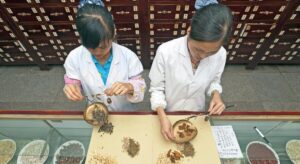In the world of gardening, one of the best kept secrets is the ability to modify the color of hydrangeas, a fascinating process that allows both amateurs and experts to personalize their gardens in a surprising way. Hydrangeas, known for their large clustered flowers, have a peculiarity: their color can vary depending on the pH of the soil they are grown in.
For those wishing to have blue hydrangeas, the key is to acidify the soil. A lower pH, around 5.2 to 5.5, promotes the absorption of aluminum, which is responsible for the blue hue in the flowers. Gardeners can achieve this effect by adding products such as aluminum sulfate or a mix of pine leaf compost and coffee grounds, which naturally lower the pH of the soil. The process is not immediate and may take several months, so patience and consistency are essential.
On the other hand, if the goal is to obtain hydrangeas of an attractive pink color, the approach changes drastically. A higher pH, above 6, prevents the absorption of aluminum and results in pink flowers. To increase the soil pH, it is recommended to add alkaline materials such as agricultural lime or wood ash. These additives should be applied carefully, as a sudden change in pH can damage the plants.
Additionally, there are white hydrangeas, whose color is not affected by the soil pH, maintaining their pristine tones regardless of soil conditions. This detail is crucial for those seeking chromatic consistency in their landscape.
It is important to regularly test the soil pH to monitor the conditions and ensure they remain in the desired range. pH test kits are widely available in gardening stores and are easy to use.
Changing the color of hydrangeas is not just a gardening trick, but also an opportunity to learn more about the interaction between plants and their environment. This knowledge turns the gardener into a color alchemist, capable of creating and recreating floral landscapes with a simple adjustment in soil pH.
Source: MiMub in Spanish












